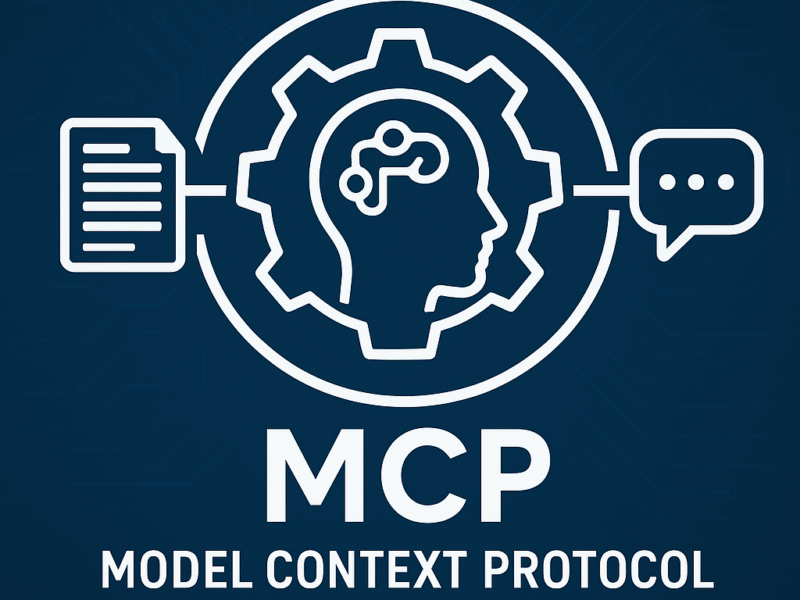
What Is an AI LLM? Understanding Large Language Models, How They Work, and Why Size Matters.
Artificial Intelligence (AI) is transforming our digital world, and at the center of many recent breakthroughs is something called an ‘LLM’ — a ‘Large Language Model’. If you’ve interacted with AI chatbots, autocomplete tools, or automated translators, chances are you’ve already used one. But what exactly is an LLM, how does it work, and why should you care?
In this blog post, we’ll break down the basics of LLMs, explore how the data is structured, look at different types of LLMs, where you can find them, and why their size is a big deal when it comes to performance and accuracy.
What Is an LLM?
A ‘Large Language Model’ is an AI system trained to understand and generate human language. It uses advanced statistical techniques and deep learning algorithms to predict the next word in a sentence, understand questions, translate text, and even generate coherent essays or code.
In simple terms, LLMs are like supercharged autocomplete engines — but far more intelligent and nuanced.
How Is the Data Structured?
To train an LLM, AI researchers feed it massive amounts of text data, often called a ‘corpus’. This can include:
* Books
* Websites
* Scientific papers
* Wikipedia articles
* Forums and social media
* News sites
The data is tokenized — meaning it’s broken down into words, subwords, or characters — and then used to teach the model patterns in language.
Each token is assigned a numerical vector (embedding) that the model uses to learn relationships between words. During training, the model adjusts billions of internal parameters to minimize the difference between its predictions and the actual next token in the dataset.
Types of LLMs
There are several types of LLMs, often named after the organizations or frameworks that created them. Here are a few key categories:
1. Autoregressive Models
These predict the next token one at a time, like GPT (Generative Pretrained Transformer).
Examples:
* OpenAI’s GPT family (GPT-2, GPT-3, GPT-4, GPT-4o)
* Google’s PaLM
* Mistral models
2. Masked Language Models
These predict missing words within a sentence rather than just the next word.
Examples:
* BERT (Bidirectional Encoder Representations from Transformers)
* RoBERTa
* DeBERTa
3. Multimodal Models
These can understand and generate not just text but also images, audio, and video.
Examples:
* GPT-4o (OpenAI)
* Gemini (Google DeepMind)
* Claude 3 (Anthropic)
Where Can You Find LLMs?
Many LLMs are available as open-source projects or through cloud-based APIs. Here are some popular sources:
Open-Source LLMs
* Hugging Face – A massive library of pre-trained models.
* EleutherAI – Creator of GPT-J and GPT-NeoX.
* Mistral – Efficient and fast LLMs available for self-hosting.
Cloud-Based LLMs
* OpenAI – Offers GPT models via API (used in ChatGPT).
* Anthropic – Claude models accessible via API.
* Google Cloud AI – Access to PaLM and Gemini via Vertex AI.
* Microsoft Azure – Hosts OpenAI’s models in the cloud.
Why Does LLM Size Matter?
One of the most frequently discussed metrics of an LLM is its size, usually measured by the number of parameters — the adjustable components that help the model “learn.”
Here’s why size is important:
1. Accuracy and Coherence
Larger models tend to be more accurate and produce more natural-sounding responses. They can better understand complex prompts and handle ambiguity more effectively.
2. Generalization
Big LLMs are better at generalizing from the data they’ve seen. That means they can apply knowledge to new situations more reliably.
3. Reasoning Ability
Advanced reasoning, logical steps, and multi-step problem-solving improve with model size — especially beyond 10B+ parameters.
4. Limitations of Size
However, size isn’t everything. Large models:
* Require more computing power
* Are slower to run
* Can still hallucinate or make mistakes
That’s why efficiency-optimized models (like Mistral 7B or Phi-2) are gaining traction — they deliver high performance with fewer resources.
Final Thoughts
Large Language Models are revolutionizing how we interact with technology. Whether you’re building an AI app, writing content, or just curious about how these systems work, understanding the fundamentals of LLMs gives you a powerful edge.
As the technology evolves, expect LLMs to become more accessible, more efficient, and more deeply integrated into everyday tools. The future of language and AI is here — and it’s written in millions (or billions) of parameters.
Have questions about LLMs or want to integrate one into your site or app? Drop a comment below or get in touch!

